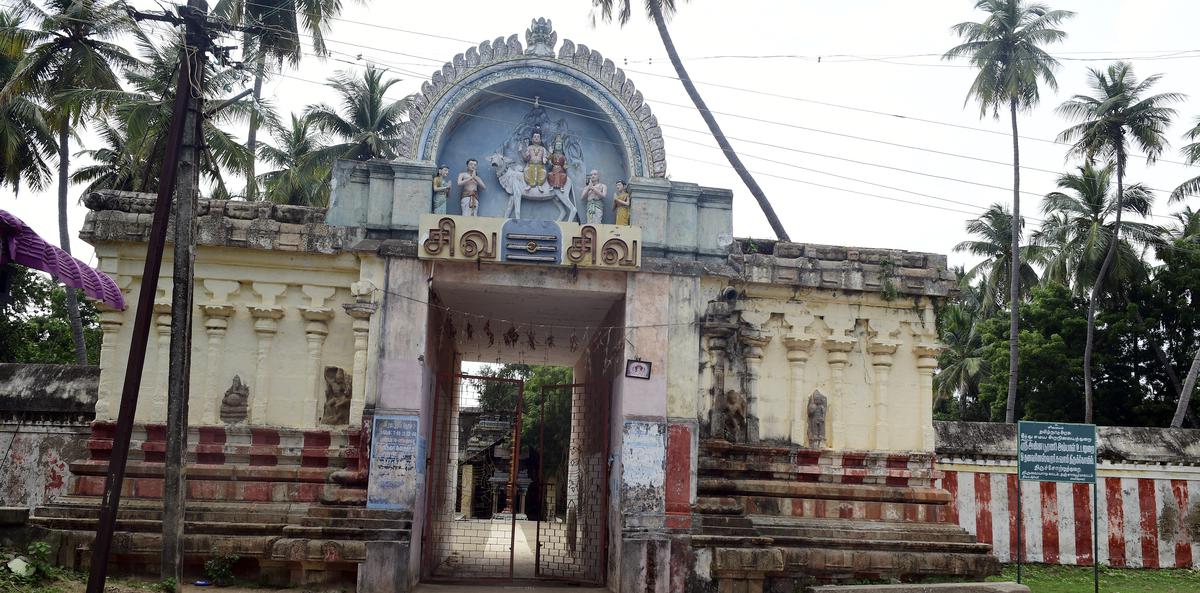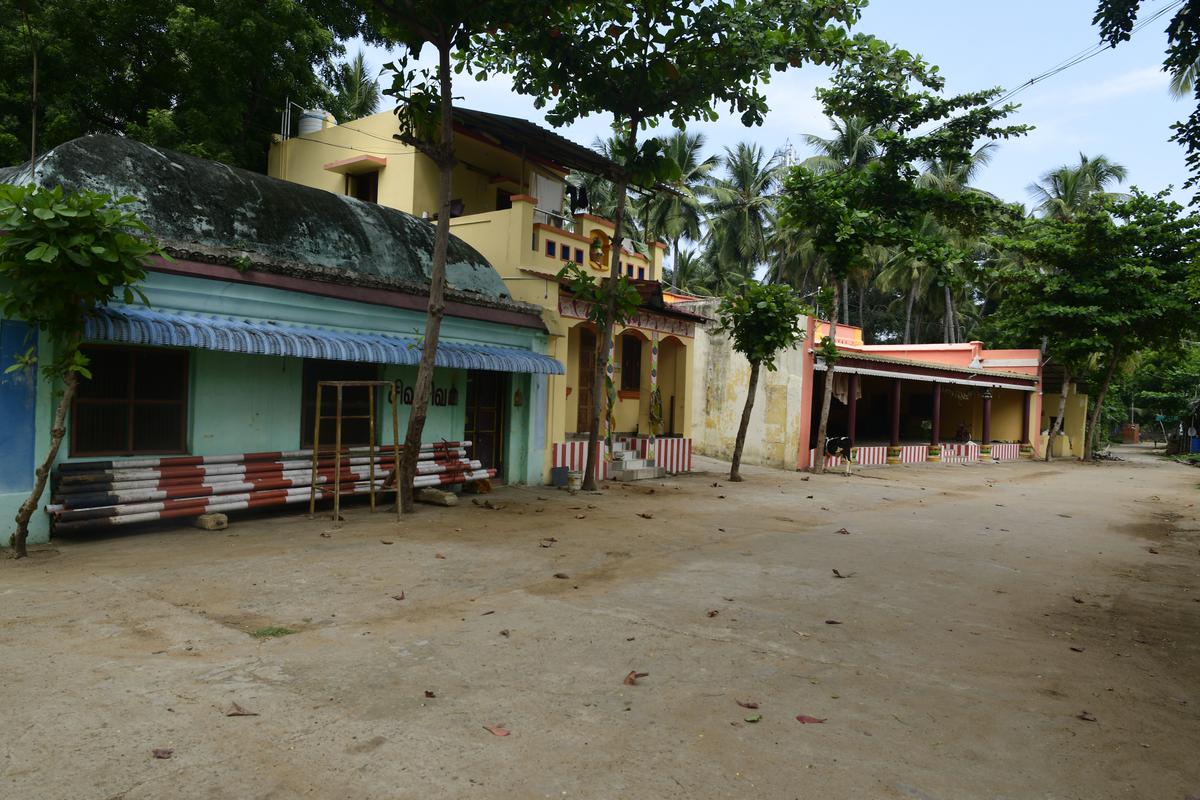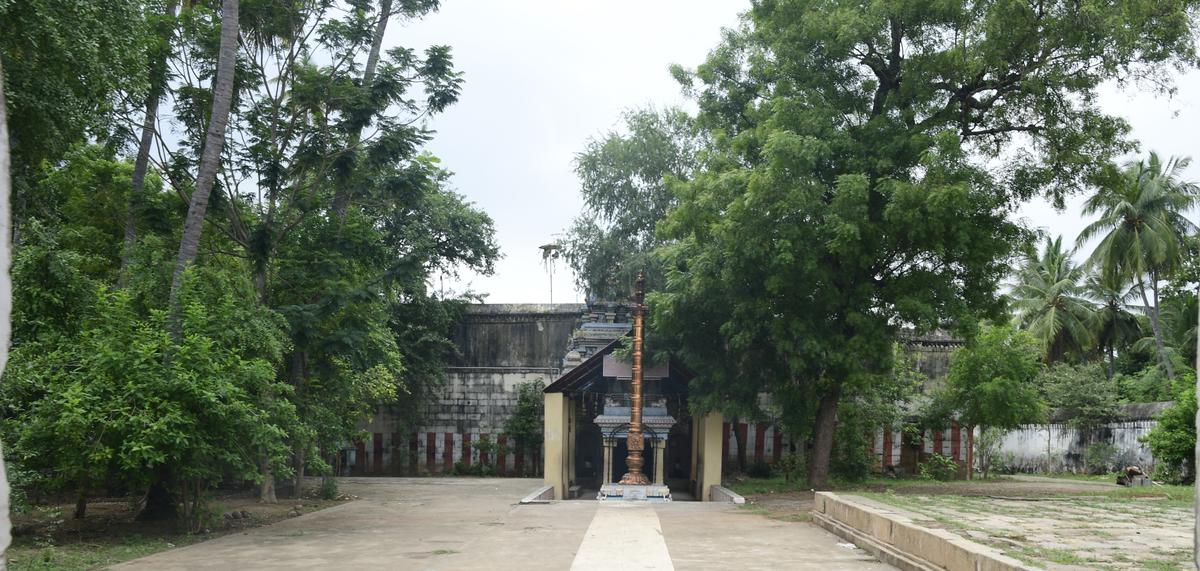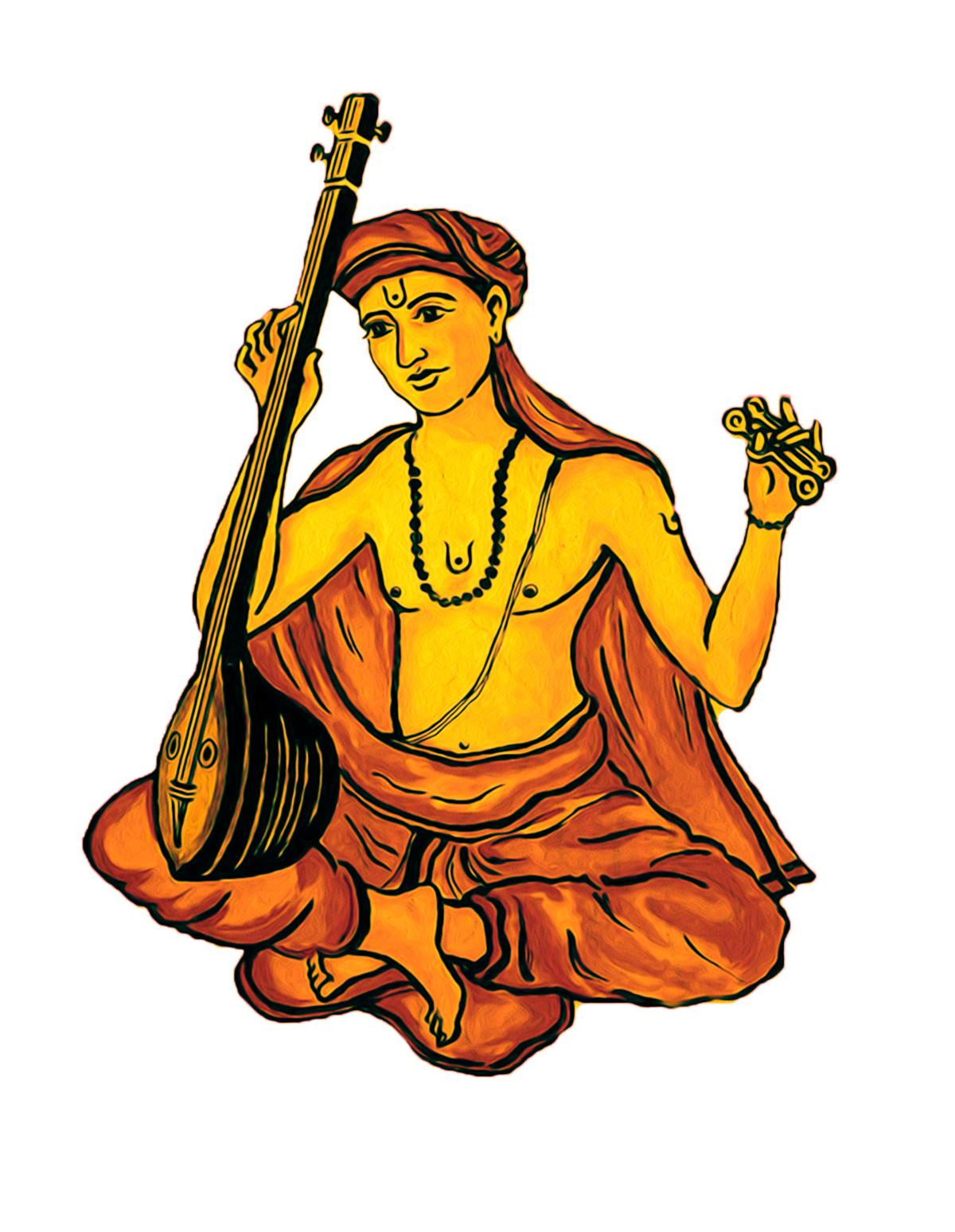Othavaneswarar temple in Thiruchottruthurai on the southern banks of the Cauvery.
| Photo Credit: M. Srinath
It’s idyllic at the temple in Thiruchottruthurai, on the southern banks of the Cauvery. The streets are deserted. Except for two women making garlands for the presiding deity Othavaneswarar, and Manoharan, the priest of the one of the Sapthasthana temples, there is no other presence, belying the temple’s place in Saivite tradition and music.
For, it was during one of the Sapathasthana festivals, when deities from seven temples would be carried in palanquins, was Saint Tyagaraja treated to the Pancharatna Mallaris by the nagaswaram players of Thiruchottruthurai, who had come to play at Tiruvaiyaru. The incident has been recorded by scholar and author Swaminathya Athreyan in his short story collection, Tyagaraja Anubhavangal, explaining the circumstances that led to the creation of a particular kriti.

Entrance to the Othavaneswarar Temple in Thiruchottruthurai
| Photo Credit:
M. Srinath
Thiruchottruthurai finds a reference in the story about the kriti Manusolini Marmamulu in raga Varamu.
According to the story, after his dinner, Tyagaraja joined his disciples who sang Dolotasava kritis and offered milk to Rama. Then, he sang Uyyalaa in Neelambari and Padaikatheera in Reetigowla before concluding the day’s poojas. It was then that they heard the sound of crackers.
“Anna, nagaswaram players from Thirucottruthurai are going to play the Pancharatna Mallari. They are very good at it. Shall we go?” asked Ramarayan, one of Tyagaraja’s disciples. The saint looked at Sundara Bhagavathar and Krishna Bhagavathar. “Shall we go?”

The agraharam near the temple
| Photo Credit:
M. Srinath
They crossed Thirumanjana street and merged into the crowd. When they reached Sannidhi street, an aarti with lamps was being offered to Lord Panchanatheeswarar and his consort Dharmasamvarthani, who were seated on a platform made of palmyra fronds.
The Mallari began in Nattai. There were four nagaswarams — two each set in mandrasthayee and tharasthayee. Six thavils accompanied them in perfect synchrony. They’ve probably practised well. There is not a single wrong note.

Othavaneswarar Temple
| Photo Credit:
SRINATH M
The music mesmerised the crowd. This was followed by Gowla, Arabi, Varalai and Sri ragas. In the Keezhaveedhi, nagaswaram players performed a thani.
Did the Pancharatna Mallari inspire Tyagaraja to compose his Pancharatna kritis or did the nagaswaram players follow a tradition created by Tyagaraja? Athreyam, himself, does not provide any clues. But, he suggests that Tyagaraja was inspired by Sarvalagu Layam in the ganam singing of Vishwesara Ganapadigal, particularly about Prahatharanyam. This incident finds reference in the short story about the Rama Neeyada kriti in Karaharapriya. It is not clear whether they were composed in order or separately.

Tyagaraja
| Photo Credit:
Special Arrangement
In his preface to the book, Athreyan, a friend of T. Janakiraman and Karichankunju, says that all the incidents in his stories are true, and narrated by Umayalpuram Swaminatha Bhagavathar and Embar Srirangachariar, disciples of Tyagaraja’s direct disciples.
Scholar V. Raghavan, in his book The Spiritual Heritage of Tyagaraja, says that the song ‘Endaro mahanubhavulu andariki vandanamu’ in Sri Raga was composed to commemorate the visit of the Kerala-based Shatkala Govinda Marar, a prodigious musician.
“The song is an omnibus obeisance to the vast galaxy of realised souls, devotees, sages, saints and singers of the praise of the Lord and can have hardly any trace of an incident like the visit of Govinda,” writes Raghavan.